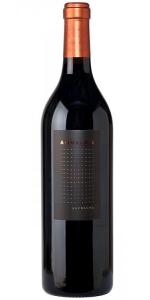Wine from Campo de Borja
Bodegas Alto Moncayo Aquilon Garnacha is made from 100% Garnacha.
The wines of Alto Moncayo are crafted to express the unique terroir of windswept high elevation Campo de Borja DO; and to serve as a benchmark for world class Old Vine Garnacha.
Aquilón is "The jewel in the Crown" a selection of the best barrels from the best lots. The vines are 60-100 years old.
Review:
This garnet-colored wine offers aromas of black currant, black raspberry and black licorice, with just a touch of charcuterie. The fruit flavors shine through with subtle notes of crushed violet. It has soft tannic structure, with a pleasant bit of grippiness in the post palate as it leads up to the long, long, finish.
-Wine Enthusiast 95 Points
About the Vineyard
Vineyards in Tabuenca and Borja, planted with indegenous clones of Garnacha starting in the 1920s.
Wine Production
The selected highest quality grapes are placed into small stainless-steel tanks of 7 tons capacity. The must is basket pressed and fermentation is finished in new French and American oak where it complets the malolactic fermentation. Wine is aged in the barrels for 24 months before bottling.
Tasting Notes
Appearance: Very deep red, scarlet rim
Aroma: Minerals and vanilla. Hints of raisins and dark Chocolate
Palate: As typical of the vintage, power and intensity with disarming elegance.
Food Pairing:
Goes well with beef, pork, game based stews and rice dishes.
- back
Selected Options
Regions
Categories
Pricing
Countries
Regions
Grape Types
Wineries
Organic/Free Shipping
The unique volcanic soil composition of this site is exhibited in this Cabernet’s mineral texture and intensely structured palate. This latest release from the exceptional 2018 vintage presents a deep purple rim surrounding an opaque garnet core with an abundance of aromas emerging from bakers’ chocolate and dark cherry to crème de cassis to tapenade. Both graceful and bold on the palate, the broad tannins are balanced by pulsing acidity that brings tension and freshness throughout. Notes of boysenberry are interspersed with accents of sweet thyme against a backdrop of crush rock minerality, adding to the long finish and layers of complexity.
Robert Parker's Wine Advocate 98+
Carra Beaujolais Blanc Pierres Dorees is made from 100 percent Chardonnay.
The nose shows step by step floral and fruity aromas. A vanilla hint in the end with a lingering finish: those are typical Chardonnay aromas.





